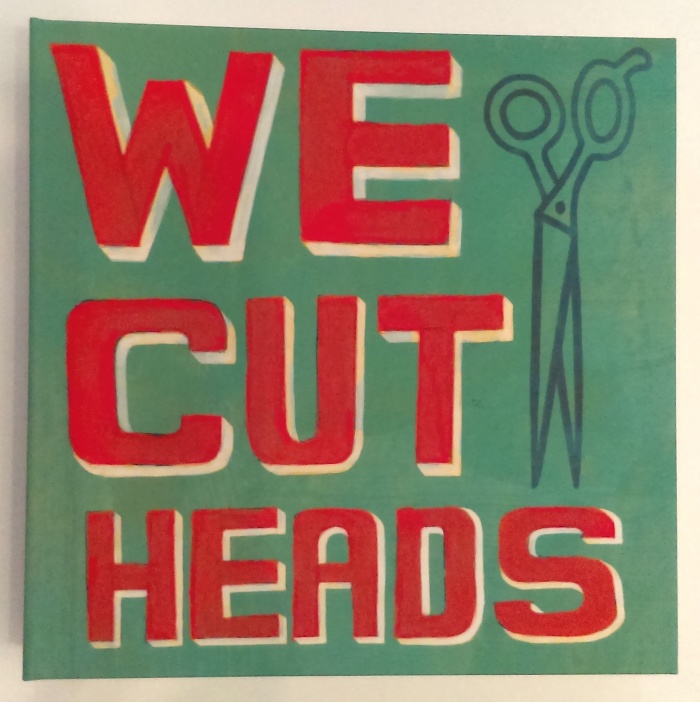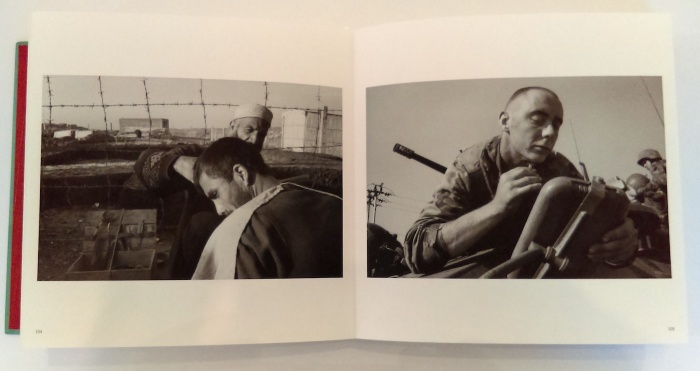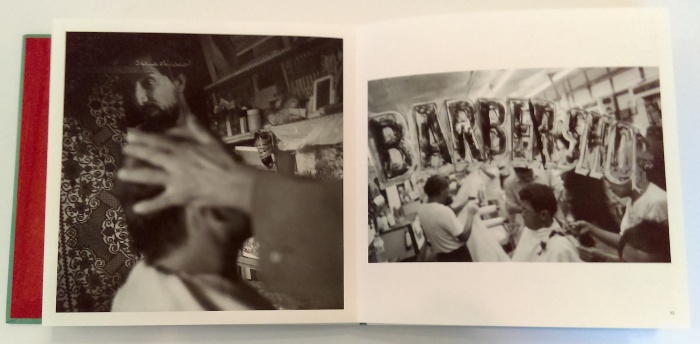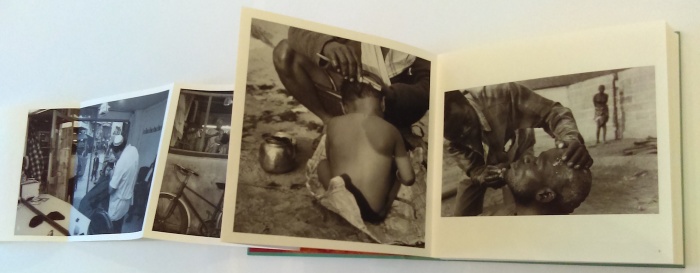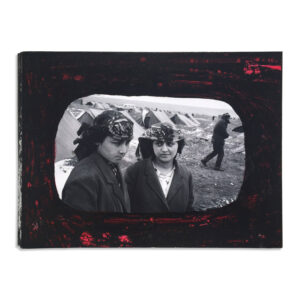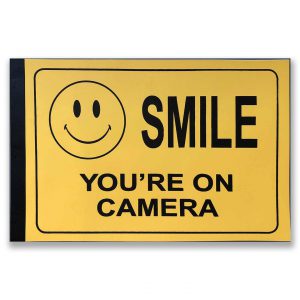- You cannot add "Electric Tulips 5.1" to the cart because the product is out of stock.
We Cut Heads
We Cut Heads
Date
2016
Edition Size
5
Media
Photo
Paper
Kozo Paper
Binding
Concertina, Paper case
Format
Artist Book
Dimensions
9 × 9 × 1.8 in
Printer
Momento Pro
Collection
Limited Edition Artists Books$ 3,500.00
Unavailable
View Collectors
Boston Athenaeum
National Library of Australia
School of the Museum of Fine Arts (SMFA) at Tufts
This compilation of documentary photographs of hair cutters and barbershops brings together a wide range of images taken over almost three decades of Stephen Dupont’s career in photography.
Cover design: Nicola Scodellaro and Umberto Torricelli; book design: Sara Zampieri & Nicola Scodellaro.
Printed by Momento Pro with pigment inks on Japanese washi paper (kozo 110 gsm) made from mulberry fibre.
Limited edition of five copies.
From the forward—
“My interest in hair cutters and barbershops goes back to the beginnings of my photography. I can’t recall exactly when, but sometime in the late 80s, early in my career, I decided I would photograph barbers. Whether I was on assignment in Afghanistan or doing a road trip through Africa, or on one of my personal projects in some strange place. I would always keep an eye out for barbers. It was to become my longest running project. After almost three decades of photography, I decided it was time to make an edit and a book. It was an arduous, inspirational and emotional exercise trawling through my photographic archive looking at all my images to find the hidden barber gems. In the process, I relived a lifetime of adventures, stories, horrors and history. What made the archive search so exciting was that I had a primary focus and theme. Unlike a retrospective edit, this was a far more accessible and approachable project.
So why barbers? Well, frankly, I like barbers. I feel a kind of connection of spirit with them as they’re creative people and have a voice, a say on things going on. They’re generally hospitable and open to having my cameras pointing at them and their customers. This is a relief given some highly inhospitable places I’ve traveled over the years. Weirdly when I go inside a barbershop, I feel like I am entering a kind of neutral porthole or sanctuary, some sacred kind of place, not like in a religious sense, but in life itself.
I began to notice that barbers were everywhere; you can be guaranteed to see at least one barber in any small town anywhere in the world. They kept popping up in front of my lens in various countries and I have always found them visually curious. Many used cutting and shaving tools from another era and the shops would be decorated in kitsch hairstyle posters. Some had movie stars or other strange ephemera stuck to the walls; calendar girls, porn posters, political leaders, kings and queens. Every one of them was unique and carried the flavor of the place or country they were in. The shops were often a complex maze of decorations, mirrors and equipment. But sometimes they were merely a makeshift set-up, a ‘pop-up’ with just a chair, a mirror and a small case of tools outside someplace under a tree or in front of a wall. The barbers I would discover over this quarter of a century were found on street corners, border crossings, in refugee camps, mental asylums, private houses, festivals and more. They were children, young people, middle aged and the elderly. All of them with one single goal, to make the customers look good. A shave or a haircut, a face massage or a shake up. All of this done in the name of vanity, hygiene, religion, identity, work or sport.
I would sometimes sample their shaves and on many occasions walk away battered and bloody. They would use cheap blades that literally tore away the skin from my face, then the cheap aftershave would be rubbed into the wounds stinging with no respite. It was all part of the experience that I reveled in.
Barbers are cool and they are a dying breed, the ancient art of the barber is a disappearing one, so be sure to stop by and experience one soon.”
— Stephen Dupont, 2016

